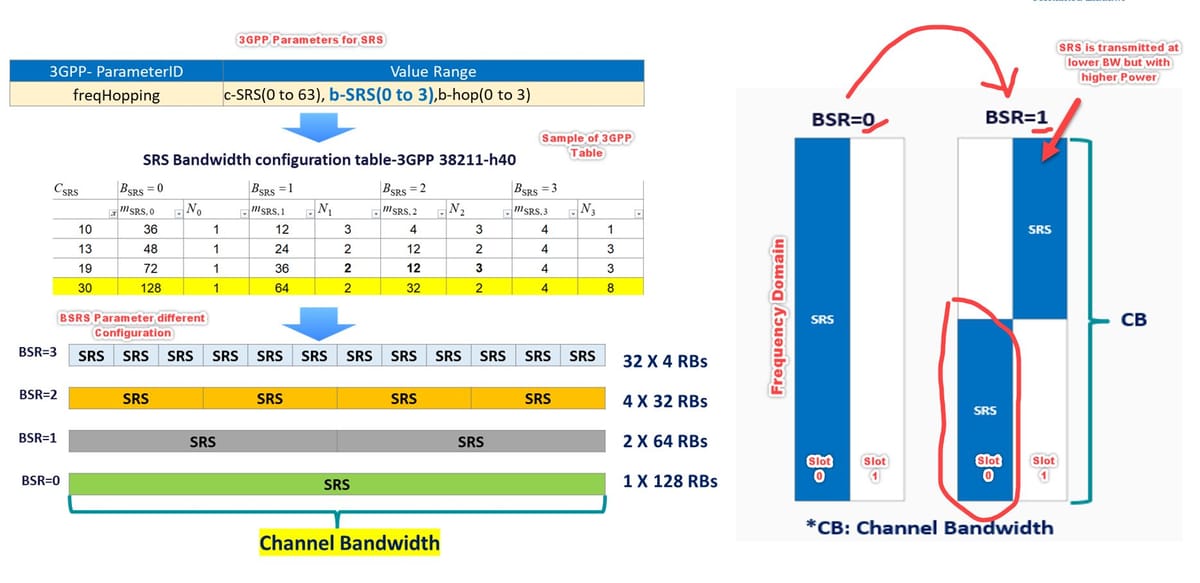5G SRS Bandwidth Allocation: freqHopping

Did you know that 5G SRS can be configured with either a full-band SRS bandwidth or a narrow-band SRS bandwidth❓
- Purpose of SRS:
Let's revisit the basics. SRS serves uplink channel measurement, time-frequency synchronization, and beam management.
- Advantages and Disadvantages:
So, what are the primary pros and cons of both scenarios—full band and narrow band?
- Transmission Power Dynamics:
Sending SRS over a wide bandwidth demands high UE transmission power. UEs with significant path loss may get a smaller SRS bandwidth for boosted power density.
- Power Aggregation Advantage:
If the SRS doesn't use the full band, it can aggregate power, enhancing SRS power spectral density. A 3 dB improvement positively impacts KPIs like UL Fallback Ratio to 4G, IBER, and USER Throughput.
- Drawbacks of Smaller Bandwidth:
Yet, a smaller bandwidth means less information on the propagation channel, limiting BTS to measuring over a smaller UL BWP segment.
- Frequency Hopping Challenges:
If the BTS needs info across the entire bandwidth, multiple SRS transmissions with frequency hopping are necessary. For example, with 32 resources, the UE transmits the SRS four times. However, this increases delay and poses a risk of outdated measurements.
- User-Centric Summary:
In summary, the Narrow band favors EDGE Users, while the Full Band benefits Center Users.
- Dynamic SRS Bandwidth Allocation:
Some vendors offer dynamic SRS bandwidth allocation based on UL SRS SINR. If the UE is near the gNB with a strong UL signal, the gNB can use the full band for optimal performance. But if the UE is far, with limited UL power, adjustments are made accordingly.
📚 Data Source:
5G NR in Bullets & 3GPP 38211-h40

for more details refer to the below video:




